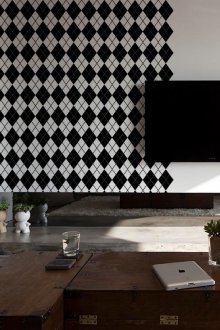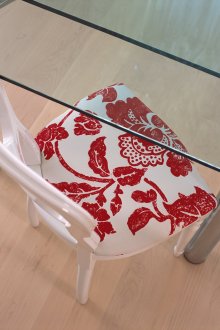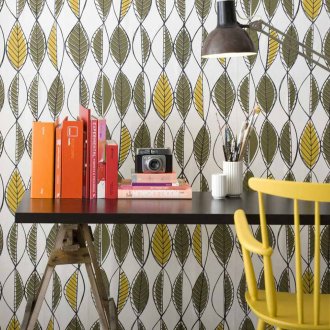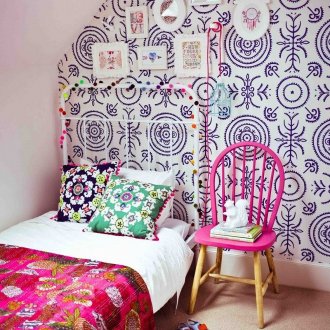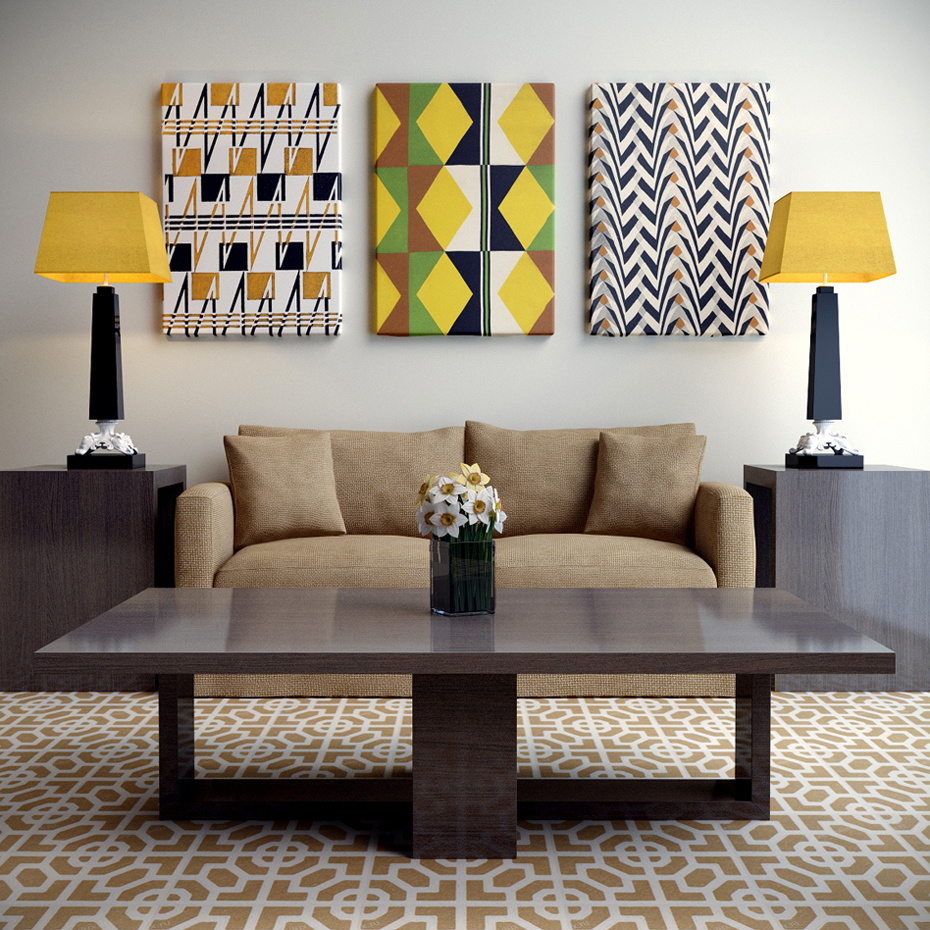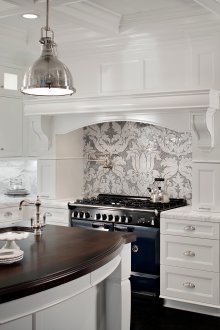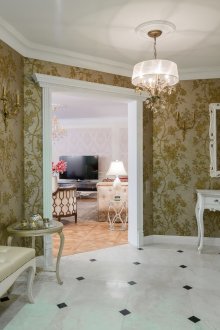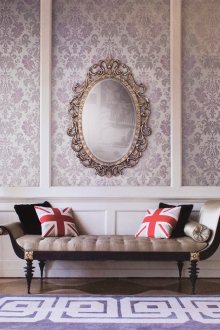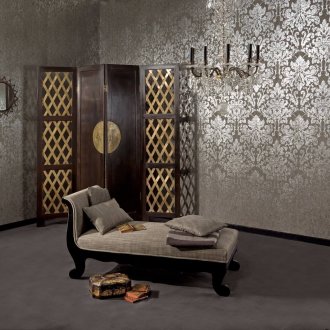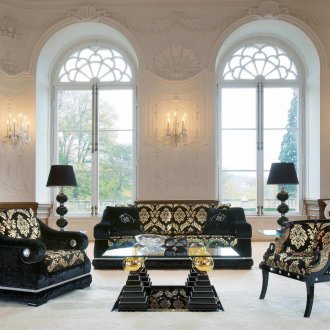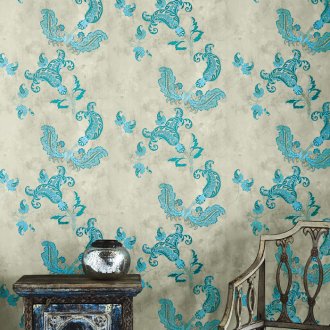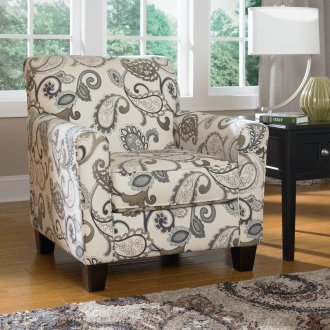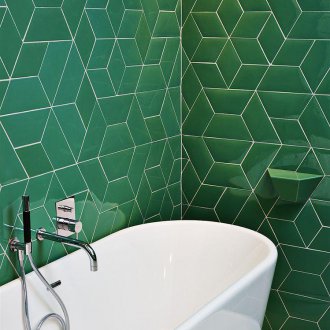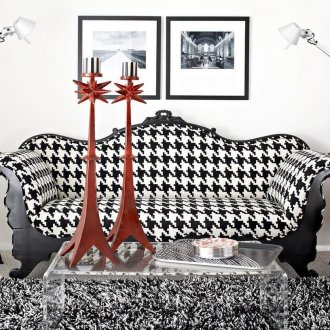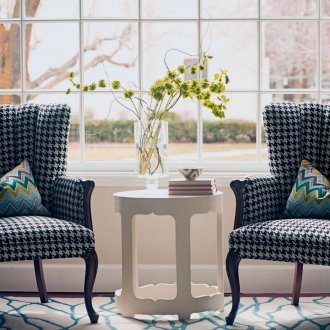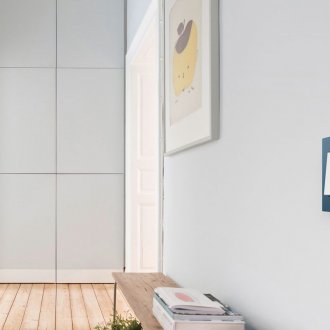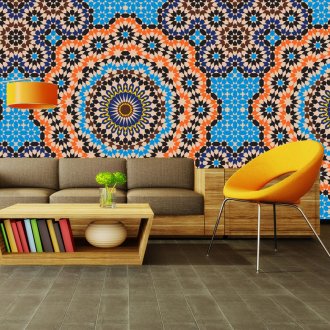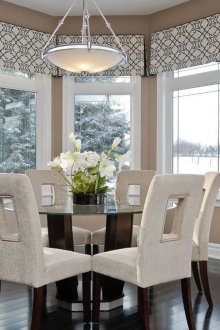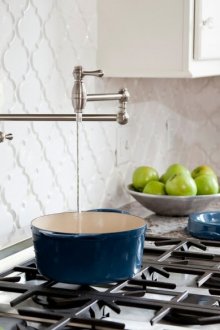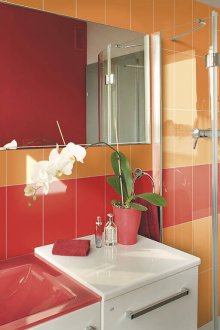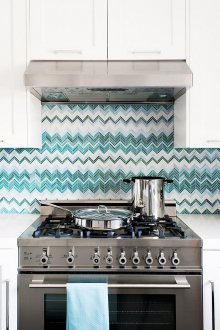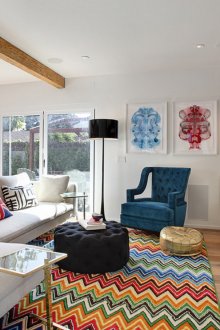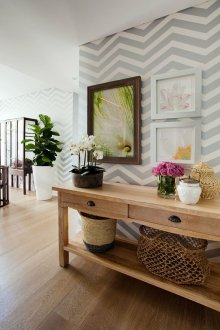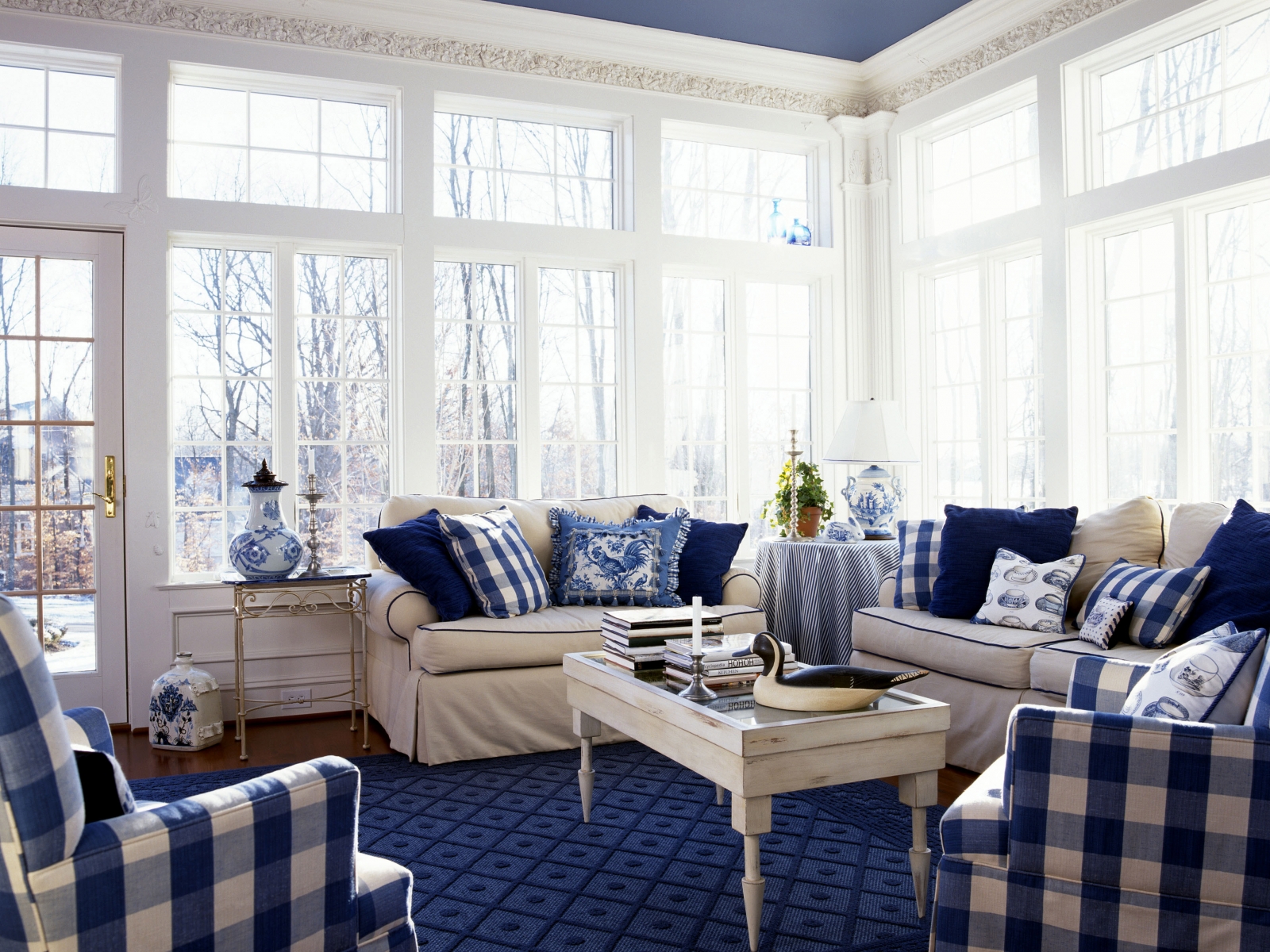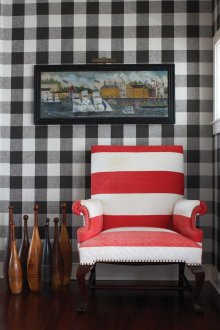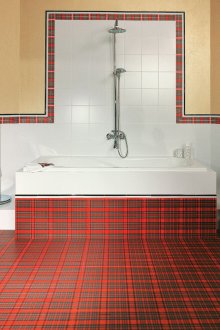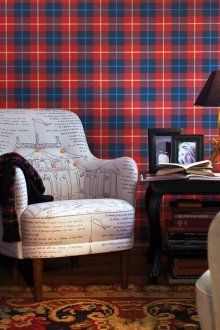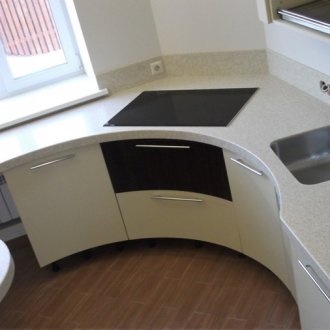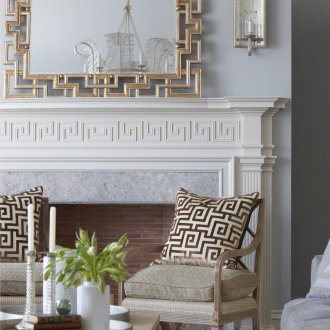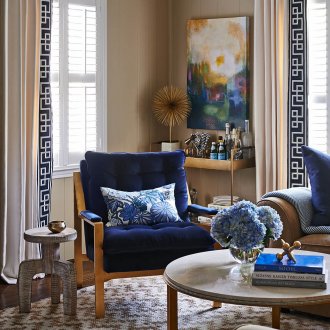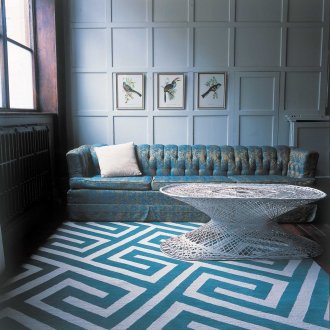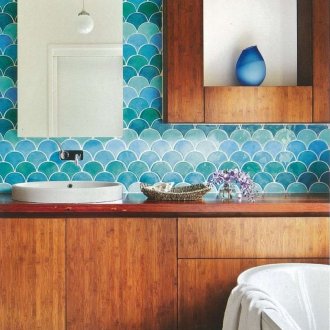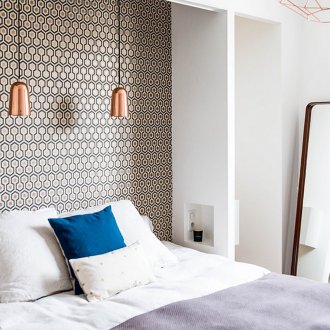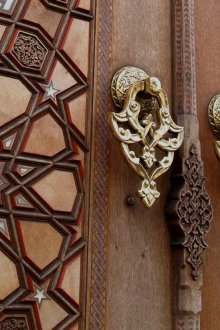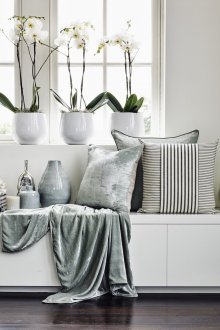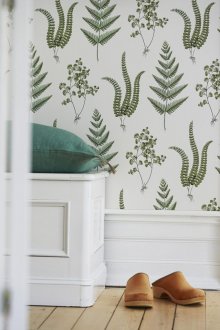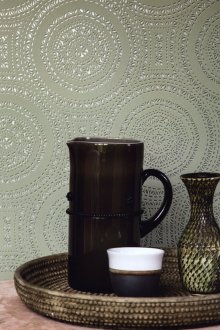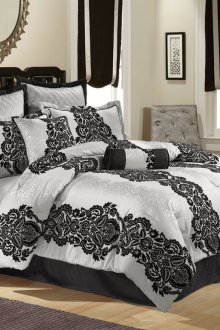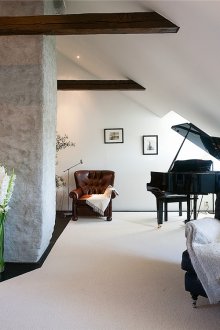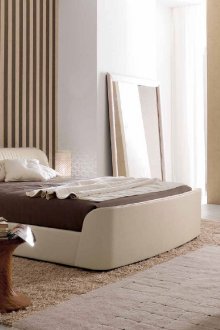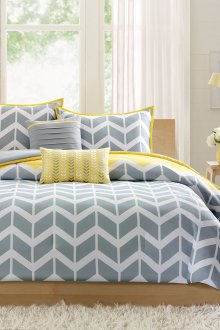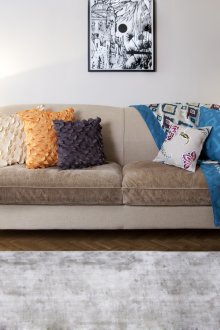Ornament in the interior decor: interesting ideas (49 photos)
Content
Since ancient times, people have actively used ornament in the interior design of their homes, as individual patterns and motifs had different symbolic meanings, and some were memorable dates. Now there are many types of ornament, which is widely used for modern interior decoration.
The role of ornament in interior design
At the heart of creating a pattern are repetitions of individual parts, as well as their rhythms and alternations.
Ornaments allow you to diversify the quiet and monophonic design of any room, giving it a vital activity and special flavor.
There is a huge variety of ornaments, but not all are used by designers. Simple and universal ornaments that find their application in any room, regardless of its purpose, gained particular popularity. Choosing a pattern is not an easy task, and even more difficult to use it correctly in interior design. Before deciding to decorate a room with an ornament, you need to know what types it happens.
An ornament by the principle of its creation is similar to a poem with several ordered stanzas, which are based on a regular repetition. The opposite of patterns is monotony, which is characteristic of peace and tranquility. To achieve complete harmony in the interior, the ornament must be skillfully combined with other elements - only a professional designer can do it, who will be able to competently set accents and revive certain details, combining color schemes.
Simple and versatile types of ornament
The ornament adorns not only walls, floors and ceilings, but also other elements of the interior, such as furniture, dishes, and household appliances. Original patterns allow you to get away with the usual rigor and monotony - they create a mysterious and cozy atmosphere. Consider the most popular patterns that are widely used in interior design.
Damask (floral) ornament
The floral ornament in the interior is equidistant patterns located in clear vertical rows. They consist of smooth thin lines that are intertwined. In the center of such a border there is always a flower. Previously, this pattern was used by residents of eastern countries to decorate home textiles, and later in other countries of medieval Europe, it was applied to the walls, floor and facades of buildings.
Home textiles (curtains, curtains, rugs, bedding, pillows and tablecloths) are decorated with floral patterns, as well as the background of shelving and other cabinet furniture.
Damask pattern allows you to highlight a separate fragment of the interior or to focus on certain areas of the floor or walls. This style of ornament appeals to people who appreciate the harmony in the room, and also prefer elegance and restraint.
Oriental (paisley) ornament
The roots of this style of pattern go deep into antiquity. It has the appearance of a curved drop, so it is ideal for creating an interior design in an oriental style.In the paisley style, clothes, home textiles and wallpapers are made, although for the latter this type of ornament is not always successful. The oriental pattern can be applied on the walls as a separate fragment, including in the general background.
Lattice (geometry)
We have such a style is used very rarely, but it is popular in the west. Therefore, it is suitable for interior decoration in the style of a loft or high-tech. The geometric pattern can be found on upholstered furniture, textiles and wallpaper. Lattices are a great addition to the modern variation of the interior. If you want to create a monotonous design, the use of a lattice will not be superfluous. It harmoniously combines with all styles of furniture.
Goose Feet
Previously, this style was only a textile pattern, but now it is used on wallpaper and furniture in various interpretations. In Scotland, it is traditionally used in two colors for interior decoration, and in our country it is used in various colors to decorate workrooms, living rooms and in rooms where you need to focus on the contrast effect.
The ideal option is to highlight individual elements created in this style in the interior.
"Four leaf"
This is an ancient pattern that was previously used to decorate walls and floors. Wallpaper with a four-leaf ornament is now used in North-East Africa (Morocco, Syria, Egypt). It consists of identical repeating elements that are located at an equal distance from each other. Four-leafed can also be found on screens, partitions, building facades in a variety of components. However, to date, this style of pattern is little used in home interior design.
Zigzags ("Christmas trees")
The simplicity of this type of pattern allows you to use it absolutely for any room design. If you put a "Christmas tree" on the ceiling, then it will visually become higher.
"Plaid"
The Scottish cage is still a fashionable trend in creating an original design of the room. This type of ornament is a specific color scheme, consisting of various stripes crossed between each other. To design a room in the English or Scottish style, the use of such an ornament is a win-win option. "Tartan" complements the interior with rigor and elegance, creating coziness and comfort.
Meander
This type of pattern originates from ancient Greece. It is a closed geometric stripes. The meander is used for edging carpets, tablecloths, curtains and clothing. To a greater extent, this pattern is used as a border.
"Scales"
It is used for wall decoration in the bathroom and in other rooms. “Scales” tires your eyes, so it’s best not to abuse it in interior design.
The combination of ornaments in the interior
The ornament in the living room can be a highlight, especially if it is used to decorate the floor, walls or ceiling. Sometimes in one room a combination of several ornaments is possible, however, it is important to combine them correctly in order to create a cozy and harmonious atmosphere. In this case, different patterns should be connected by something, for example, by color.
They perfectly combine with each other and complement each other with a floral ornament with a lattice or strict stripes.
Geometric patterns are best combined with a grid or a plaid. It is also possible to combine two or three shades (for example, green, light green and pale green).
The only kind of pattern that can be combined with absolutely any ornament is stripes in various interpretations. However, they should only complement the selected ornament, and not be accentuating.
If there is carpet on the floor or on the walls, the use of an active ornament on these surfaces is prohibited. In this case, it is better to arrange the ceiling, walls and floor in a neutral or monotonous style, especially in a small room.Following some simple rules when creating a design will help to give the interior a certain style, sophistication and originality.
